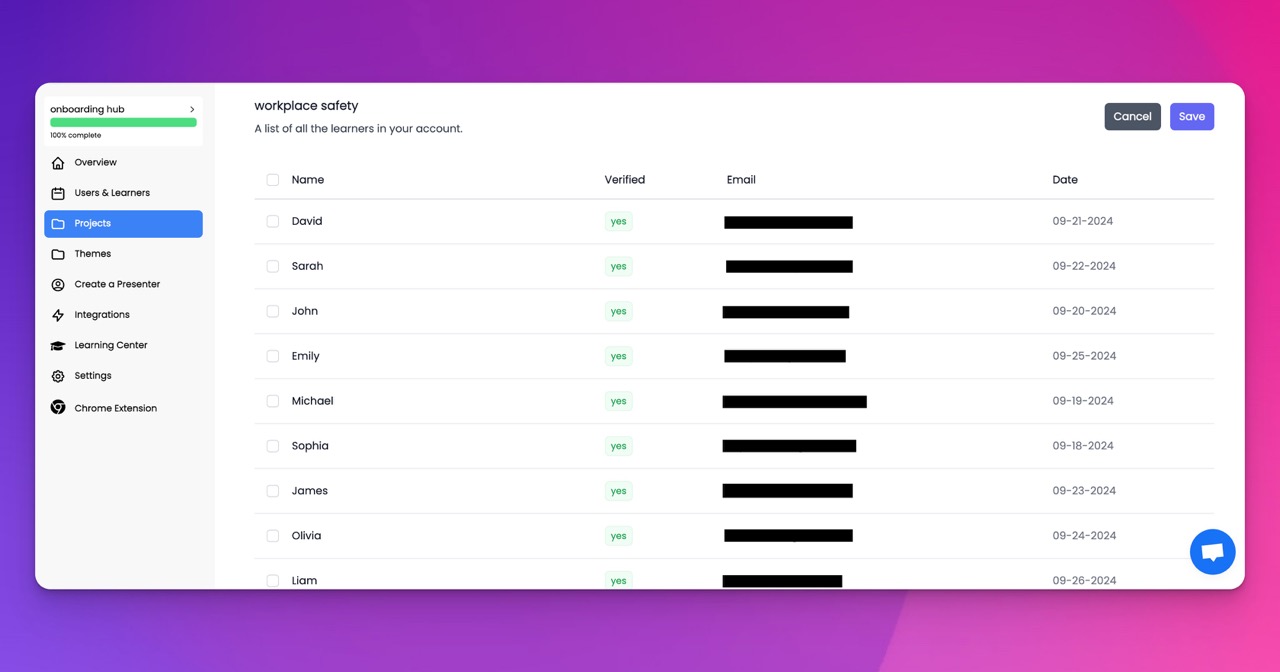🎉 Trainday now integrates with Zendesk and Hubspot 🎉 Trainday now integrates with Zendesk and Hubspot 🎉 Trainday now integrates with Zendesk and Hubspot
🎉 Trainday now integrates with Zendesk and Hubspot
🎉 Trainday now integrates with Zendesk and Hubspot
Contact
Port Protection: Crafting Custom Safety Programs from Maritime Incident Insights
In the intricate and risk-prone environment of port operations, where each activity carries its own set of hazards, the importance of crafting tailored safety programs cannot be understated. "Port Protection" delves into how maritime incident insights are pivotal in developing customized safety training programs that are directly responsive to the specific needs and risks of port operations. Utilizing detailed analyses of past incidents, ports can pinpoint recurring safety issues and devise training strategies that specifically address these challenges, thereby enhancing overall safety and operational efficiency. This blog post explores how maritime incident data can be transformed into actionable training strategies, significantly reducing risks and safeguarding port personnel.
Utilizing Incident Data to Identify Safety Priorities
The effective use of incident reports is crucial for understanding the specific safety challenges that port operations face, allowing for the development of targeted interventions.
Analyzing Patterns and Trends
A systematic review of maritime incident reports helps identify common hazards across different port operations, such as loading mishaps, equipment failures, or personnel errors. Recognizing these patterns allows safety officers to prioritize issues that require immediate attention and ongoing monitoring.
Learning from Past Incidents
Detailed case studies derived from specific incidents provide valuable lessons that can be incorporated into safety training. Discussing real-world scenarios helps personnel understand the consequences of lapses in safety and the importance of vigilance in preventing similar incidents.
Developing Tailored Safety Training Modules
With insights gained from incident data, training programs can be specifically designed to address the most pertinent risks, ensuring that safety measures are both practical and relevant.
Scenario-Based Training
Custom safety training scenarios that simulate real-life situations encountered in port operations can be particularly effective. These scenarios allow workers to practice their response in a controlled, safe environment, building confidence and reinforcing proper safety procedures.
Focused Skill Enhancement
Certain roles within port operations may require specialized safety training. Data-driven insights enable the development of skill-specific modules that target areas with higher risks of incidents, such as crane operations or hazardous material handling.
Enhancing Training Engagement Through Technology
The incorporation of technology in safety training can dramatically improve engagement and retention of safety protocols among port personnel.
Virtual Reality (VR) and Augmented Reality (AR) Simulations
Using VR and AR to create immersive training experiences allows workers to interact with realistic simulations of port environments and potential hazard scenarios. This technology not only enhances the learning experience but also enables repeated practice without real-world risks.
Interactive Digital Platforms
Interactive e-learning platforms that include quizzes, video tutorials, and interactive diagrams can support varied learning styles and increase the engagement levels of port workers. These platforms also allow for easy updates as new data or technologies emerge.
Establishing a Culture of Continuous Improvement
Continuous learning and adaptation are key to maintaining high safety standards in dynamic port environments.
Ongoing Safety Assessments
Regular safety audits and assessments help measure the effectiveness of current safety programs and identify areas for improvement. Continuous feedback from these assessments informs the updating of training programs to reflect new technologies, regulations, or changes in operational procedures.
Engaging Port Workers in Safety Development
Involving workers in the development and refinement of safety programs ensures that the training is grounded in the everyday realities of port operations. Worker input can provide practical insights that enhance the relevance and effectiveness of safety training.
Conclusion
"Port Protection: Crafting Custom Safety Programs from Maritime Incident Insights" highlights the critical role of tailored safety training in enhancing the protection and efficiency of port operations. By leveraging detailed incident data to understand specific risks and develop targeted training interventions, ports can significantly mitigate hazards. The integration of advanced technologies and continuous improvement strategies further ensures that port personnel are well-prepared to manage and respond to risks effectively, safeguarding both themselves and the port infrastructure.
Accelerate Compliance.
Deliver OSHA-Ready Courses Instantly.
Empower your team with data-driven training solutions tailored to your industry's safety standards. Stay compliant, reduce risks, and boost productivity with AI-powered course creation.
